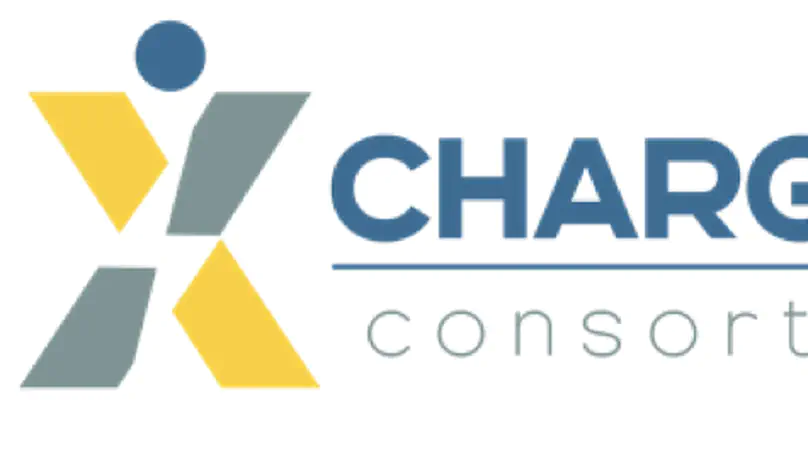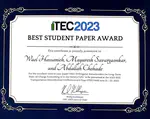Biography
As an industrial engineer, I have embarked on a remarkable journey spanning think tanks, academia, and industry. With an unwavering passion for the automotive domain, my expertise shines in the captivating realm of electric, automated, and connected mobility. Harnessing the power of cutting-edge technologies like machine learning, artificial intelligence, Bayesian methods, simulation tools, and the bedrock of engineering and physics, I take great delight in crafting ingenious solutions that propel the boundaries of modern transportation to new heights.
- Electric and Connected Vehicles
- EV Charging Infrastructure
- Lithium-ion Batteries
- Explainable Artificial Intelligence
- Spatio-Temporal Modeling
- Customized Deep Learning
- Active Learning and Bayesian Design
- Autonomous Vehicle Simulation
-
Ph.D. in Industrial and Systems Engineering, 2019-2023
University of Michigan - Dearborn, USA
-
M.S. Industrial Engineering, 2018
University of Michigan - Dearborn, USA
-
B.E. Mechanical Engineering, 2015
University of Pune, India
Experience Highlights
My top research projects include:
- Electric Vehicle (EV) charging infrastructure reliability improvement. More info here.
- EV-EVSE communication using ISO 15118.
- Error reporting using OCPP and OCPI standards.
- Customized DL solutions for SOC/SOH/RUL estimation in Lithium-ion batteries.
- Explainable AI for advanced battery prognostics and diagnostics.
My top research projects include:
- Safety of Autonomous Vehicles (AVs) - SOTIF & ISO 21448.
- Virtual verification and validation of AVs.
- Exploration of Vehicle-to-Infrastructure (V2I) and Vehicle-to-Vehicle (V2V) technologies for safer trajectory predictions using GAN-based models. More info here.
- Customized DL solutions for SOC/SOH/RUL estimation in Lithium-ion batteries. More info here.
- Development of explainable AI and Bayesian methods for warranty analytics. More info here.
- Developed ROS-based pythonic library for Software-In-Loop (SIL) and Hardware-In-Loop (HIL) testing for L3+ ADAS features.
- Developed and deployed framework for corner-case realization within self-driving stacks.
- Replicated processed sensor fusion (Camera, LiDAR, Radar)outputs for real-time communication with driving policies.
- Developed OpenDrive maps for integration with CARLA simulator.
- Responsible for cost, value, and feasibility analysis for Stellantis, Ford, BMW, and Volvo Laser/LiDAR scanning programs.
- Implemented continuous improvement practices to reduce CAD modeling defects by over 20%.
- Implemented risk mitigation plans and root cause analysis using a 5 Why’s system.
- Assisted in the development and maintenance of DVP&R and APQP activities such as DFMEA, PFMEA, CP, RCA, and GD&T.
Recent Posts
Featured Publications

To systematically improve the public charging experience, EV charging industry stakeholders need to define and measure it precisely. Many stakeholders currently measure aspects of the charging experience, but they typically employ metrics that are either operational in nature, such as charger uptime and mean time between failures, or composite customer satisfaction indices. To improve the customer experience most effectively, the industry needs metrics that define the charging experience from the perspective of the customer, not business operations. Furthermore, industry practitioners need granular metrics to know what specific aspects of the charging experience need improvement. This report defines such customer-focused metrics, called key performance indicators (KPIs).

With the growing adoption of Electric Vehicles (EVs), there is an increasing need for a reliable EV charging infrastructure. To help meet this need, the report “Recommendations for Minimum Required Error Codes for Electric Vehicle Charging Infrastructure,” recommends a set of minimum required error codes (MRECs) and their functional and responsibility classification. Charger manufacturers, charging station operators, EV manufacturers, and other stakeholders in the North American market are encouraged to uniformly adopt the MRECs to enhance EV charging error reporting, interpretation, and diagnostics. This document serves as a guide to enable uniform implementation of the MRECs using the Open Charge Point Protocol (OCPP).

The flexibility offered by the Open Charge Point Protocol (OCPP) through the introduction of custom error codes also creates its own set of challenges. While the integration of custom error codes allows for enhanced granularity, it also introduces inconsistencies and fragmentation within the overarching diagnostic reporting system. Consequently, these custom error codes add an additional layer of complexity to the already intricate tasks of error reporting, diagnostics, and resolution. The variation in the definition of custom error codes makes it difficult to assess which entity in the charging ecosystem is responsible to correct errors and hinders the implementation of uniform error handling procedures across diverse charging stations and management systems. This results in prolonged resolution times and increased maintenance costs, resulting in decreased charging reliability. The challenge of charging reliability can be a significant obstacle to the widespread adoption of EVs, emphasizing the urgent need for a more robust approach to error handling across the EV charging ecosystem.
Recent Publications
Recent & Upcoming Talks
Contact
- mayuresh@umich.edu
- 1955 N. Fremont Ave., Idaho Falls, ID 84301
- DM Me!
- Let’s Connect!






